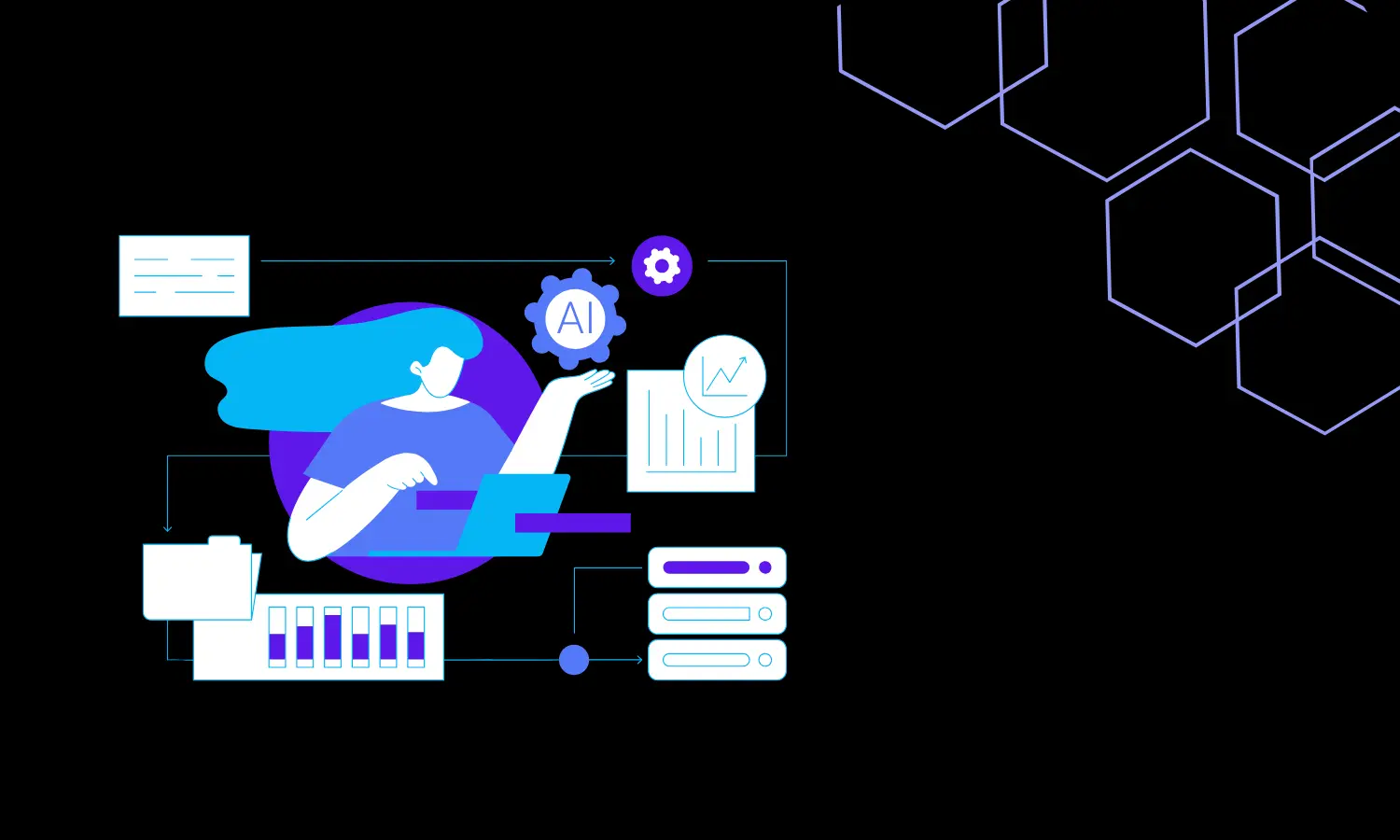Artificial Intelligence is no longer a futuristic concept, it’s here, transforming industries and redefining how businesses operate. In the UK alone, the AI sector is valued at over £21 billion and is projected to contribute up to £1 trillion to the economy by 2035. With 79% of British professionals already using generative AI tools in their roles, it’s clear that AI is becoming an essential part of business strategy across sectors.
This blog dives into the top 10 AI trends set to shape UK businesses in 2025, from hyper-personalization that revolutionizes customer experiences to autonomous AI agents capable of handling complex tasks. Whether you’re a small business owner or a corporate leader, understanding these trends will empower you to make informed decisions and unlock new growth opportunities. Let’s explore what’s next for AI and how it can redefine your business future.
1. AI for Everyone – The Democratization Revolution
The days of AI being reserved for tech giants with massive budgets are over. 2025 marks the year when sophisticated AI capabilities became accessible to organizations of all sizes. With 68% of small businesses now using some form of AI, up from a mere 15% in 2022, it’s clear the barriers have fallen. This shift isn’t just about technology access; it’s about leveling the playing field and allowing smaller players to compete with industry titans.
No Coding Required: The No-Code Revolution Powering AI Adoption
The democratization of AI is being driven by powerful no-code platforms that put sophisticated capabilities in the hands of non-technical users. These intuitive tools are transforming how businesses implement AI across sectors:
- Visual automation platforms: Organizations are creating complex AI workflows by simply connecting modules in a visual interface, a trend that’s expected to continue as 70% of new enterprise applications will use low-code or no-code technologies by end of 2025
- Process automation tools: Companies are building AI-powered business processes automation that connect existing tools and automate repetitive tasks, reducing labor costs by up to 60-70% using tools like N8N and Make
- Pre-trained AI models: Businesses are leveraging sophisticated capabilities that have already been developed and refined, deploying AI solutions in weeks or days instead of the traditional 6-12 months
- AI-as-a-Service solutions: Organizations are accessing enterprise-grade AI through simple subscription models with minimal upfront investment, contributing to the AIaaS market growth from $16.08 billion in 2024 to a projected CAGR of 36.1% from 2025 to 2030
- Voice AI platforms: Companies are deploying natural-sounding assistants that handle customer inquiries around the clock, with customer service being the most common AI application (56% of businesses)
A small Yorkshire retailer recently implemented a customer prediction system using a no-code platform, boosting repeat purchases by 23%, a capability that previously required a dedicated AI development team.
Voice AI: The Most Accessible Game-Changer
Voice AI stands out as particularly transformative for businesses of all sizes:
- Handles customer inquiries with 92% accuracy while maintaining natural conversation flow
- Operates 24/7, turning hours-long response times into seconds
- Typically pays for itself within 3-6 months through reduced staffing costs
- Creates consistent customer experiences across all interactions
At AI Agency Plus, we’ve seen firsthand how Voice AI transforms operations for our clients, regardless of their technical expertise or budget constraints.
Getting Started: Simpler Than You Think
For businesses looking to join the AI revolution:
- Begin with clearly defined, high-impact use cases rather than broad implementations.
- Take advantage of POC AI Adoption offers to experience benefits firsthand.
- Leverage government support programs that can cover up to 50% of implementation costs
- Start small, measure results, and scale what works
The question is no longer whether smaller organizations can afford AI, but whether they can afford to be left behind. With accessible solutions like our Voice AI platform, the technology that once belonged exclusively to corporate giants is now within reach for every ambitious business ready to embrace the future.
Why not experience the power of democratized AI yourself? Our team is ready to guide your AI implementation journey and show you how Voice AI can transform your customer interactions, just book a free discovery call with our experts today.
2. AI That Thinks Like We Do
2025 marks the year when AI evolved from simply recognizing patterns to understanding them. These next-generation systems don’t just process data, they reason through problems, adapt to new scenarios, and make logical decisions in ways that feel remarkably human.
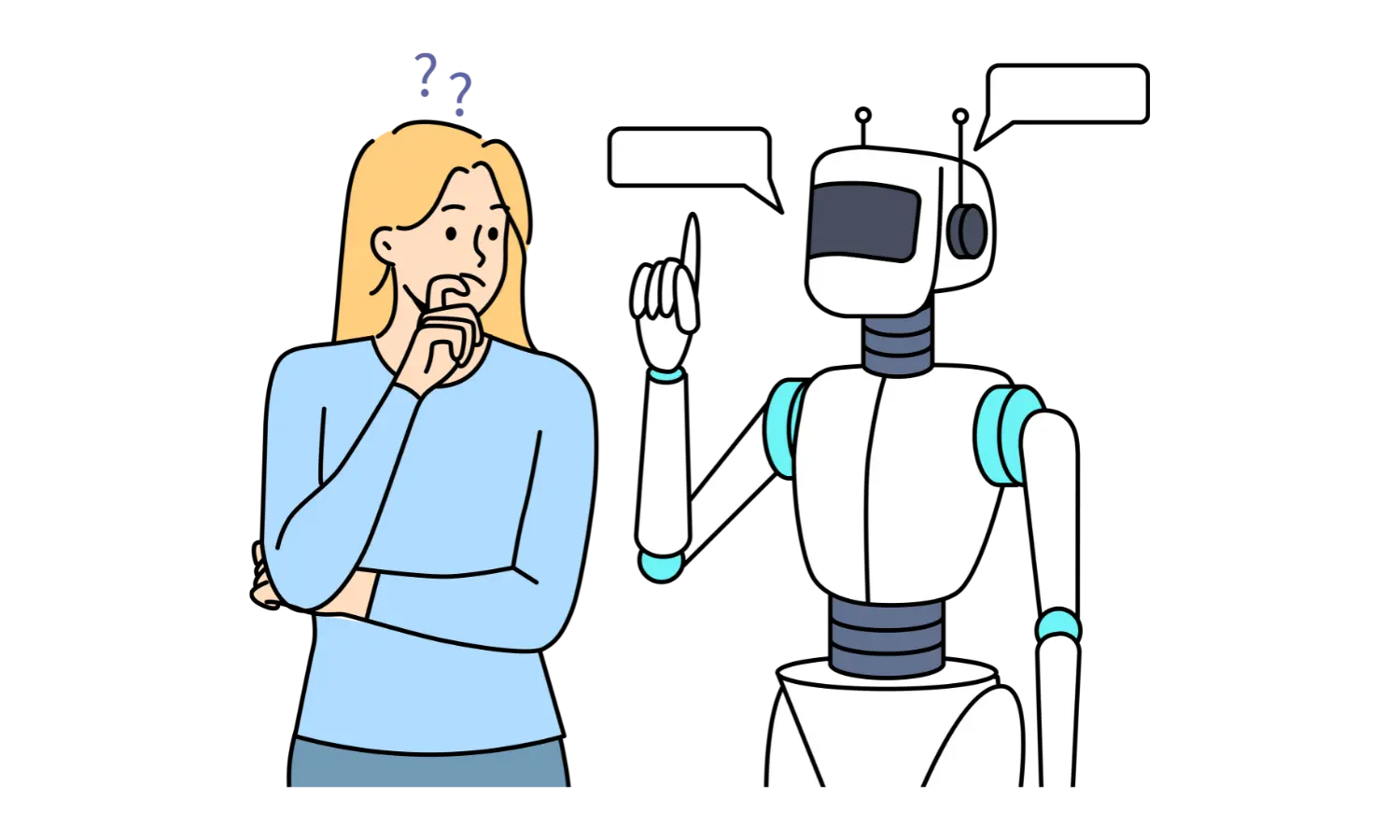
What Makes These Systems Different?
The new breed of AI brings capabilities that fundamentally change what’s possible:
- Contextual understanding: Grasping the “why” behind information, not just the “what”
- Multi-step reasoning: Breaking complex problems into logical steps rather than single-pass analysis.
- Adaptability to novel situations: Applying knowledge to scenarios never encountered in training.
- Explanation of conclusions: Providing clear rationales for recommendations, not black-box answers
A financial analyst using these systems can move beyond basic trend spotting to understanding complex market interactions and their potential implications, similar to consulting an experienced colleague rather than just checking a dashboard.
AI Reasoning That Delivers
These advanced reasoning capabilities are transforming how organizations operate:
Legal Services (29.2% adoption rate)
- Contract analysis that identifies subtle implications and potential risks
- Case research that connects precedents across seemingly unrelated areas
- Regulatory compliance that adapts to changing interpretations
Financial Analysis
- Risk assessment that considers complex interrelationships between factors
- Investment strategies that adapt to emerging market conditions
- Fraud detection that spots sophisticated schemes traditional systems miss
Strategic Planning
- Decision support that evaluates complex scenarios and their implications
- Resource allocation optimized across multiple competing priorities
- Competitive analysis that identifies emerging threats and opportunities
For organizations ready to move beyond basic automation, these advanced systems offer something unprecedented, artificial intelligence that doesn’t just execute tasks but actually helps us think better.
The competitive advantage goes to those who recognize this isn’t just an upgrade in computing power, but a fundamental shift in what machines can contribute to human decision-making.
3. AI That Takes Action on Its Own
The era of artificial intelligence that simply answers questions is giving way to something far more powerful, autonomous agents that take initiative and complete complex tasks without constant supervision. These intelligent systems don’t just generate content or analyze data; they actively solve problems, make decisions, and adapt to changing circumstances.
What Makes These Agents Special?
Today’s autonomous AI brings capabilities that transform how work gets done:
- Goal-directed behavior: Pursuing objectives through multiple steps and approaches
- Self-correction: Identifying and fixing errors without human intervention
- Contextual awareness: Understanding the broader environment and adapting accordingly
- Coordination with other systems: Working alongside both humans and other AI agents
Unlike chatbots that respond only when prompted, these agents proactively identify opportunities, suggest improvements, and take action when appropriate, similar to having a tireless team member who’s always thinking ahead.
Game-Changers Across Industries
Autonomous agents are already transforming operations across sectors:
Customer Service
- Handling complex inquiries from start to finish, not just initial screening
- Proactively reaching out when potential issues are detected
- Managing personalized follow-ups based on customer history
Supply Chain Management
- Automatically adjusting inventory levels based on multiple factors
- Rerouting shipments in real-time to avoid disruptions
- Negotiating with suppliers within set parameters
Financial Operations
- Monitoring transactions for suspicious patterns
- Executing trades based on predefined strategies
- Reconciling accounts and flagging discrepancies
As autonomous agents continue evolving throughout 2025, they’re redefining what’s possible in business operations. The question isn’t whether these agents will transform your industry, but how quickly you’ll adapt to a world where AI doesn’t just inform decisions, it makes and executes them.
4. Generative AI Grows Up
Generative AI has evolved from a fascinating novelty to a core business asset driving real results. In 2025, this technology has matured beyond creating amusing images and basic text to fundamentally transforming how companies innovate, create, and solve problems. With content production costs dropping by 40% and product development cycles accelerating by 30%, gen AI is delivering measurable impact across departments and industries.
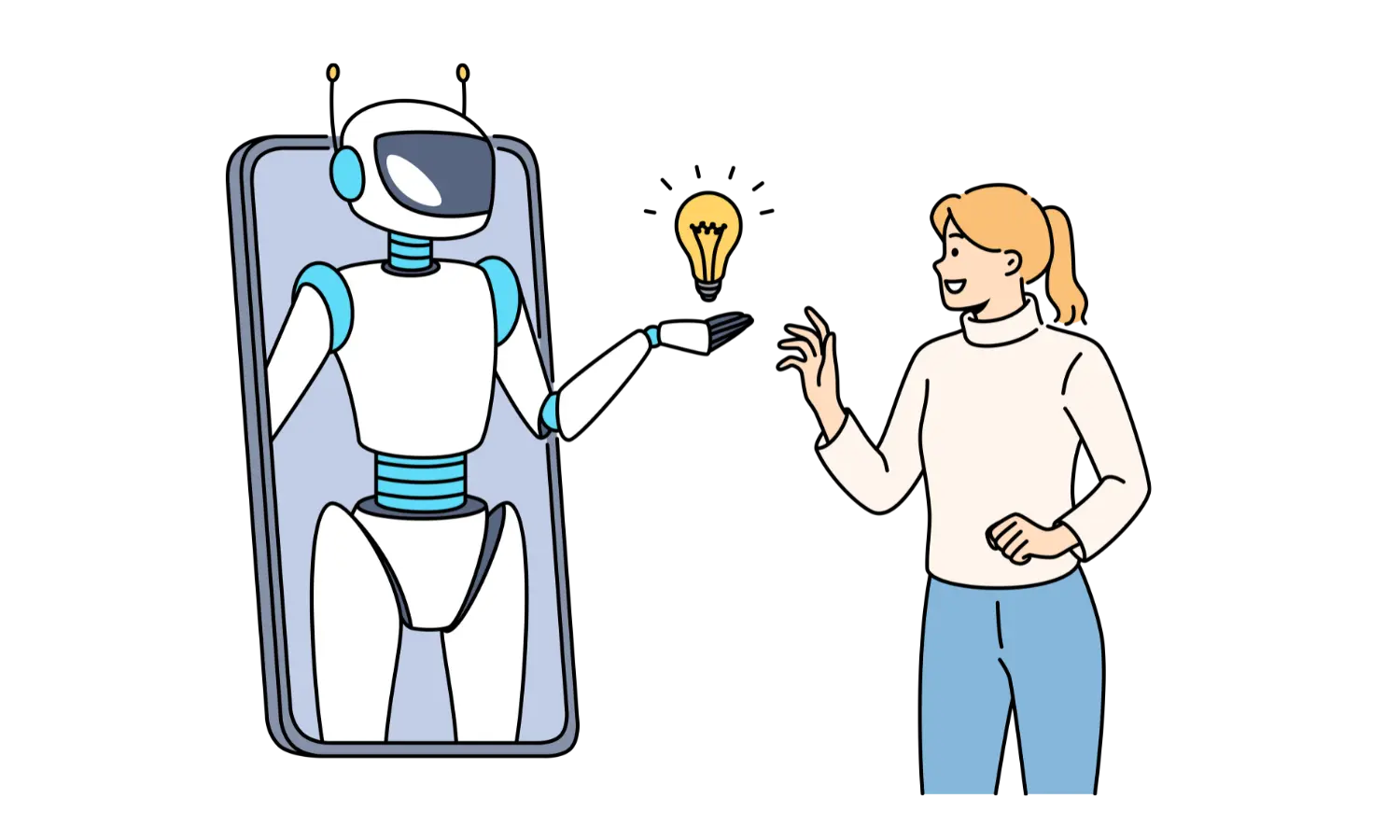
Beyond Writing Blog Posts
Today’s AI technologies capabilities extend far beyond basic content creation:
- Product design: Creating and testing multiple prototypes in hours instead of weeks
- Code generation: Building functional software components with minimal human intervention
- Strategic planning: Generating and evaluating multiple business scenarios
- Customer insights: Synthesizing patterns from thousands of interactions into actionable intelligence
Real Impact, Real Numbers
The business benefits are substantial and measurable:
Marketing Transformation
- Personalized campaigns created in minutes instead of days
- A/B testing at unprecedented scale (hundreds of variations instead of dozens)
- Content that adapts automatically to different platforms and audiences
Product Development Revolution
- Design iterations completed 5x faster than traditional methods
- Simulation of product performance under countless scenarios
- Automatic optimization based on multiple competing objectives
Customer Experience Reinvention
- Personalized interactions that feel genuinely human
- Support content that adapts to the customer’s specific situation
- Visual and interactive elements created on-demand
Artificial intelligence has crossed the threshold from interesting curiosity to essential business capability, and companies that recognize this shift are reaping substantial rewards in efficiency, innovation, and market responsiveness.
5. Hyper Personalization at Massive Scale
Remember when personalization meant adding someone’s first name to an email? Those days are gone. In 2025, hyper-personalization means creating genuinely individual experiences for each customer across every touchpoint.
This revolution is powered by artificial intelligence that analyzes hundreds of data points in real-time, enabling tailored interactions that feel remarkably human. With personalized campaigns driving 22% higher click-through rates, the business case is compelling and the technology is finally ready for prime time.
Beyond Name Tags: Personalization That Actually Matters
Today’s hyper-personalization goes far beyond basic segmentation:
- Real-time adaptation: Experiences that change based on immediate behavior and context
- Cross-channel consistency: Personalization that follows customers across devices and platforms
- Predictive personalization: Anticipating needs before customers express them
- Contextual awareness: Considering factors like location, weather, and current events
A winter coat shopper might receive completely different recommendations based on their location’s temperature, upcoming travel plans visible in their email, and previous browsing patterns, all calculated instantly as they interact with your brand.
Real People, Real Results: AI Personalization in Action
The impact spans virtually every customer-facing function:
AI In Retail
- Product recommendations that consider not just purchase history but current context
- Pricing and promotions tailored to individual price sensitivity
- Store experiences that adapt to the specific shopper in real-time
AI is transforming Financial Services
- Banking interfaces showing different options based on spending patterns
- Investment advice calibrated to individual risk tolerance and goals
- Proactive notifications about relevant services before customers ask
AI To Streamline B2B Relationships
- Sales approaches customized to each stakeholder’s specific concerns
- Content that addresses the prospect’s unique business challenges
- Service experiences that anticipate needs based on usage patterns
In a world where consumers increasingly expect brands to understand them as individuals, hyper-personalization isn’t just good business it’s becoming the price of admission.
6. Robots as Teammates, Not Tools
Forget the image of robots confined to factory assembly lines. In 2025, collaborative robots (cobots) are becoming integral team members across industries. This shift isn’t about replacing humans, it’s about creating partnerships that leverage the strengths of both.
With the cobot market growing at a staggering 41.5% annually, these intelligent machines are transforming how we work, boosting productivity while tackling tasks that are too dangerous, repetitive, or precise for humans alone.
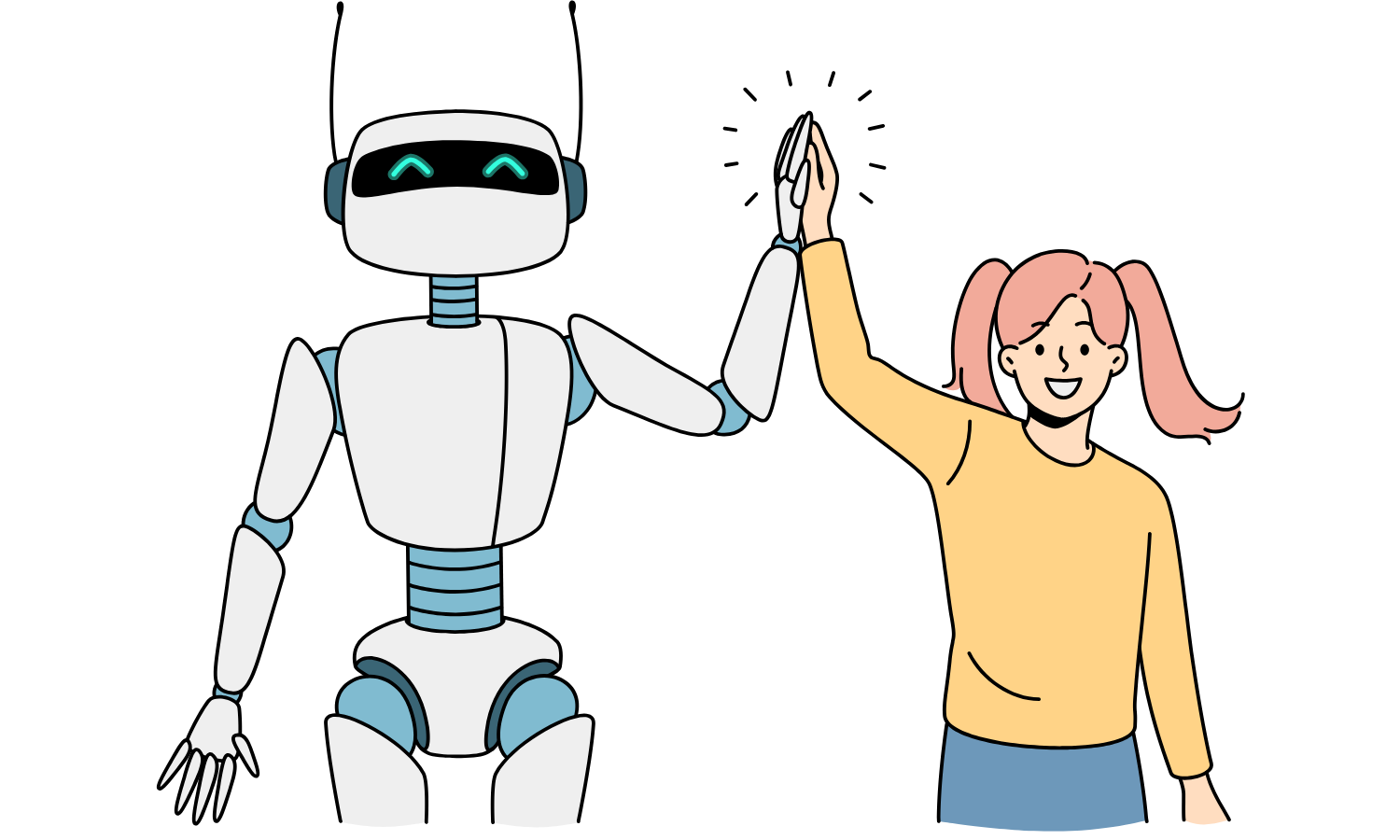
From Clunky Machines to Brilliant Partners: The Cobot Evolution
Today’s cobots are light-years beyond their clunky predecessors:
- Superhuman sensing: Detecting human presence with near-perfect accuracy to ensure safety
- On-the-fly learning: Adapting to new tasks without extensive reprogramming
- Intuitive interfaces: Allowing non-technical staff to “teach” new skills easily
- Specialized designs: Including food-grade robots for sensitive environments
A manufacturing engineer can now “show” a cobot a new assembly process, and the machine will refine and optimize the technique through continuous learning—a far cry from the rigid, pre-programmed robots of the past.
Dream Teams in Action: Where Humans and Robots Excel Together
The impact of this collaboration is being felt across sectors:
Manufacturing Reimagined
- Precision tasks completed with superhuman accuracy
- Heavy lifting and repetitive motions handled without fatigue
- Quality control enhanced by tireless visual inspection
Healthcare Transformed
- Surgical assistance providing steady hands and perfect precision
- Patient lifting and mobility support reducing staff injuries
- Medication management with zero errors
Retail and Hospitality Evolution
- Inventory management with real-time accuracy
- Customer service bots handling routine inquiries
- Food preparation with consistent quality and hygiene
Companies embracing these human-robot teams are seeing productivity jumps of up to 30%, while also reporting higher job satisfaction as employees are freed from mundane tasks to focus on more rewarding work.
The future workplace isn’t about humans versus machines, it’s about creating powerful partnerships that combine human creativity and judgment with robotic precision and tirelessness. Organizations that master this collaboration will have a significant edge in efficiency, innovation, and employee satisfaction
7. Predictive Analytic That Actually Works
Predictive analytics has evolved from an interesting concept to a business superpower. In 2025, organizations are shifting from reactive firefighting to proactive strategy, thanks to AI algorithms that can accurately forecast trends, risks, and opportunities.
With the data economy now worth over £73 billion, the ability to extract actionable foresight from information providers competitive edge. Companies using these systems report 15% lower inventory costs and 20% higher sales through more accurate forecasting, turning data into tangible business results.
How Today’s Predictive Systems Outshine Yesterday’s Tools
Modern predictive analytics offers capabilities that were science fiction just a few years ago:
- Real-time processing: Analyzing data as it’s created, not hours or days later
- Multi-source integration: Combining internal metrics with external factors like social media, weather, and economic indicators
- Scenario modeling: Testing multiple possible futures to prepare for various outcomes
- Accessible interfaces: Putting powerful predictions in the hands of non-technical decision-makers
A retail manager can now receive an alert about a potential stock shortage before it happens, with specific recommendations for addressing it all generated automatically based on hundreds of variables analyzed in seconds.
Game-Changing AI-Powered Business Applications Across Industries
The impact of predictive analytics is transforming operations across sectors:
AI in Supply Chain
- Anticipating disruptions weeks before they occur
- Optimizing inventory levels based on multiple factors
- Reducing waste by 30% through more accurate forecasting
Maintenance Revolution
- Predicting equipment failures before they happen
- Scheduling maintenance when it’s actually needed, not on arbitrary schedules
- Cutting unplanned downtime by up to 40%
Financial Transformation
- Detecting fraud patterns before significant losses occur
- Credit scoring that considers broader factors for fairer decisions
- Market analysis that spots emerging trends before competitors
The organizations gaining advantage aren’t just collecting more data, they’re using predictive systems to see around corners and make smarter decisions before events unfold.
8. Old-School AI Makes a Comeback
While everyone’s been buzzing about the latest AI breakthroughs, something interesting is happening in the background. Traditional AI solutions, the workhorses that have been quietly powering businesses for years are experiencing a major renaissance. In 2025, companies are rediscovering the value of these proven technologies, finding that sometimes the tried-and-true approaches deliver the most bang for their buck.
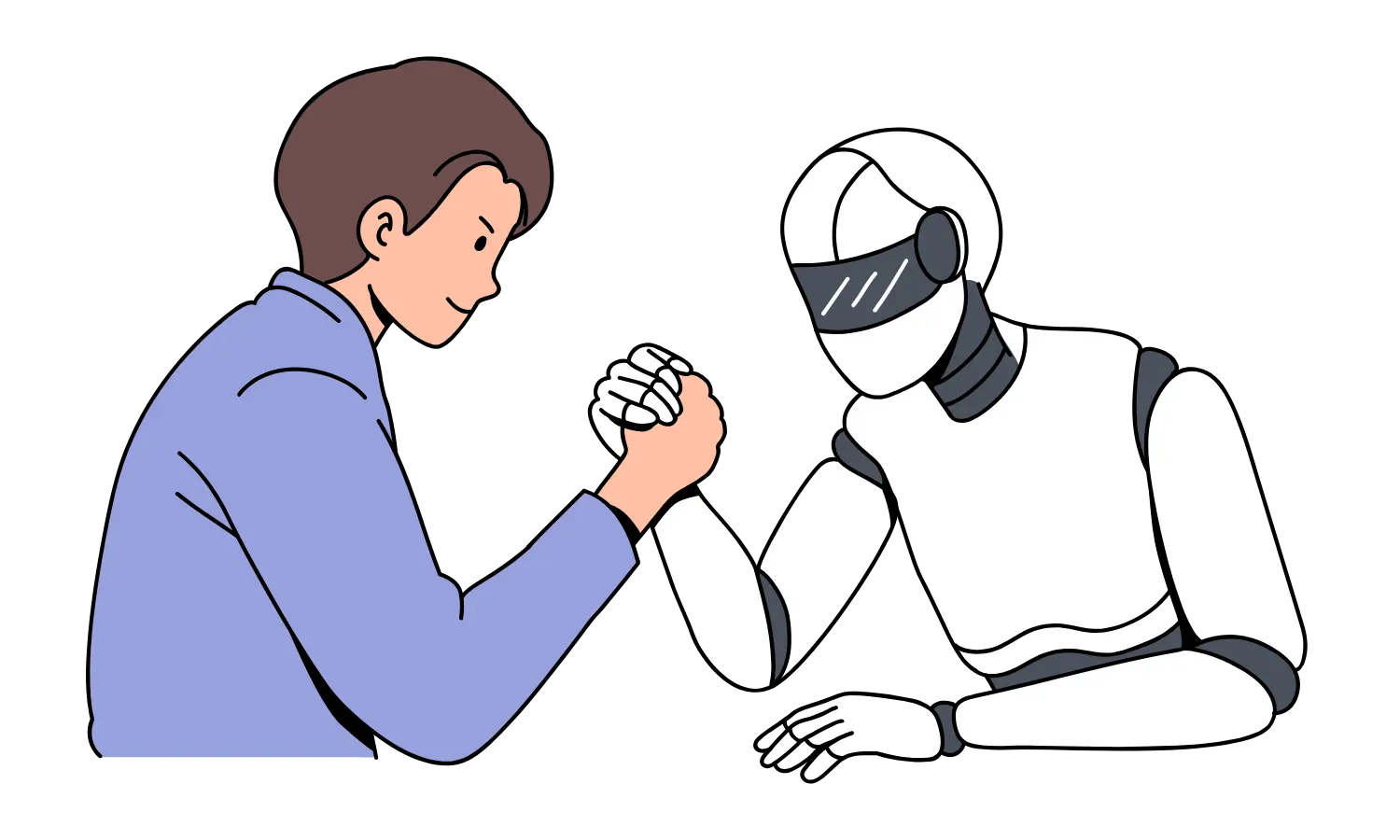
Why Businesses Are Going Back to Basics
There’s a growing realization that flashy new AI isn’t always the answer:
- Faster implementation: Traditional solutions often deploy in weeks, not months
- Clear ROI: Established use cases with proven track records of success
- Lower risk: Well-understood limitations and fewer surprises
- Easier integration: Seamless connection with existing systems and processes
A mid-sized manufacturer recently scrapped plans for an expensive generative AI project, opting instead for a traditional machine learning solution that boosted production efficiency by 22% within two months of deployment.
Where the Old Guard Still Reigns Supreme
Traditional AI is thriving in key areas:
IT and Telecommunications (29.5% adoption)
- Network optimization reducing outages by 35%
- Predictive maintenance cutting repair costs by a quarter
- Chatbots handling 70% of routine customer inquiries
Healthcare (11.5% adoption)
- Image analysis speeding up diagnoses by 40%
- Patient flow optimization reducing ER wait times by 30%
- Medication management improving adherence rates by 25%
Retail (11.5% adoption)
- Inventory forecasting cutting overstocking by 20%
- Personalized recommendations boosting online sales by 15%
- Fraud detection saving millions in prevented losses
The smartest companies in 2025 aren’t chasing the newest AI fad, they’re strategically blending cutting-edge and traditional approaches. By focusing on proven solutions that deliver consistent results, these organizations are achieving real-world improvements that directly impact the bottom line
9. AI That Explains Itself – Trust Issues? AI Has an Answer for That
The black box era of AI systems is ending. With 63% of consumers ready to walk away from brands over ethical AI concerns, companies are prioritizing systems that can explain their decisions in plain language.
This shift isn’t just about avoiding trouble—it’s about building genuine trust in an increasingly AI-driven world. Organizations that embrace transparent AI aren’t just checking regulatory boxes; they’re creating stronger customer relationships and more resilient business models.
Why Transparency Matters More Than Ever
The stakes for unexplainable AI have never been higher:
- Customer expectations: People want to know why they were denied a loan or shown certain content
- Regulatory pressure: New rules require companies to explain automated decisions
- Brand protection: AI mistakes can go viral in minutes, damaging reputations
- Employee adoption: Teams resist using systems they don’t understand or trust
Beyond Compliance: The Business Upside
Ethical, explainable AI delivers tangible benefits:
Customer Trust Transformed
- 78% of people prefer brands with transparent AI practices
- Customers stay 2.3x longer with companies they trust with their data
- Transparent systems generate 35% more positive word-of-mouth
Better Business Outcomes
- Diverse, bias-checked systems consistently outperform black box alternatives
- Companies with ethical AI frameworks experience 41% fewer algorithm-related incidents
- Recruitment systems with transparency features build more diverse, effective teams
Competitive Differentiation
- Ethical AI practices featured prominently in marketing drive 22% higher engagement
- Transparency becomes a selling point in B2B relationships
- Talent gravitates toward companies with responsible AI reputations
10. The Power of Tech Mashups
Something magical happens when AI teams up with other cutting-edge technologies. This powerful combination, AI working alongside IoT, blockchain, edge computing, and 5G is creating possibilities that would be impossible with any single technology alone.
With 5G now blanketing the country and smart devices multiplying daily, the foundation for these combined solutions is firmly in place. Companies embracing this convergence are seeing efficiency jumps of up to 35% and creating business models that simply couldn’t exist before.
Why 1+1=3 in Today’s Tech Landscape
The real breakthrough comes from how these technologies complement each other:
- AI + IoT: Smart sensors feed constant data to learning systems that get smarter every day
- AI + Blockchain: Secure, transparent data sharing that maintains privacy while enabling collaboration
- AI + Edge Computing: Processing happens where data is created, cutting response times by 60%
- AI + 5G: Lightning-fast connections supporting applications requiring split-second decisions
Game-Changers Already Transforming Industries
These technology mashups are creating real-world magic:
Smarter Cities
- Traffic systems that adapt in real-time, cutting congestion by 28%
- Public safety networks that spot potential issues before they escalate
- Energy grids that balance supply and demand automatically, reducing waste by 22%
Connected Manufacturing
- Production lines that self-optimize based on multiple factors
- Maintenance systems that predict failures weeks before they happen
- Digital twins that test changes virtually before physical implementation
Retail Reimagined
- Shopping experiences that blend digital convenience with personal service
- Supply chains with end-to-end visibility and automatic adaptation
- Customer insights that connect online behavior with in-store actions
The organizations gaining the edge aren’t those adopting individual technologies in isolation, but those creating ecosystems where multiple innovations work together. This convergence isn’t just changing how business works, it’s redefining what’s possible.
Your 2025 Artificial Intelligence Journey Starts Here
The AI trends for 2025 we’ve explored offer game-changing opportunities for businesses of all sizes, from established enterprises to ambitious startups. Whether you’re looking to revolutionize customer support with Voice AI, integrate predictive analytics into your decision-making, or create hyper-personalized experiences that drive loyalty, these technologies are now accessible without massive budgets or technical teams.
Don’t watch from the sidelines as competitors race ahead. Book a free discovery call with our team at AI Agency Plus today, and we’ll show you how to integrate these powerful AI capabilities into your specific business context. Our experts will help you identify the most practical starting points and develop a roadmap that delivers measurable results. The future belongs to those who act today, let’s build yours together.

